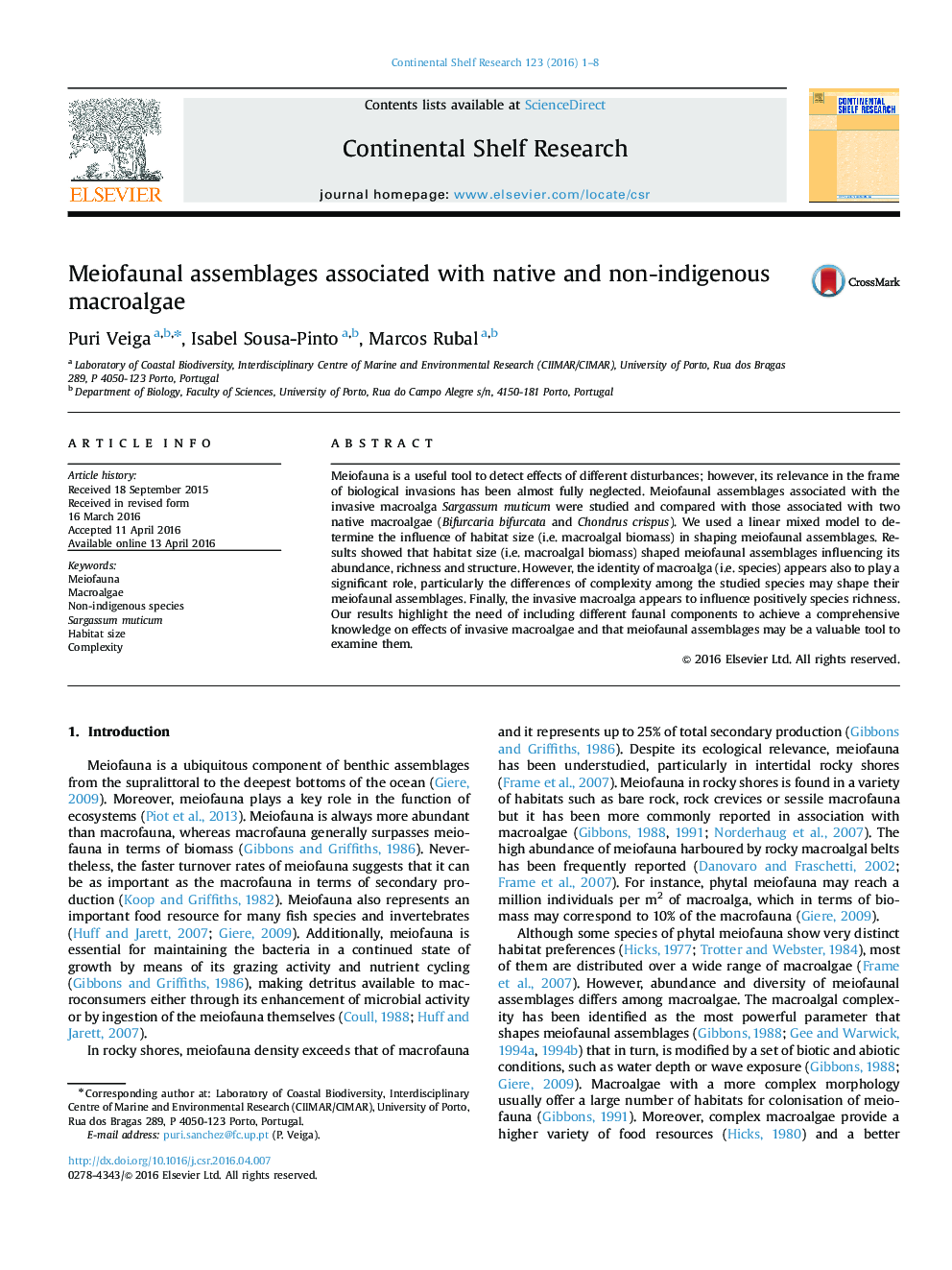| Article ID | Journal | Published Year | Pages | File Type |
|---|---|---|---|---|
| 4531549 | Continental Shelf Research | 2016 | 8 Pages |
•Meiofaunal assemblages associated with native and non-indigenous macroalgae.•Habitat size provided by macroalgae seem to shape epifaunal assemblages.•Macroalgal identity seems to play a role shaping epifaunal assemblages.•Invasive macroalga differed in structural complexity from native species.•Invasive macroalga harboured distinct meiofaunal assemblages to native species.
Meiofauna is a useful tool to detect effects of different disturbances; however, its relevance in the frame of biological invasions has been almost fully neglected. Meiofaunal assemblages associated with the invasive macroalga Sargassum muticum were studied and compared with those associated with two native macroalgae (Bifurcaria bifurcata and Chondrus crispus). We used a linear mixed model to determine the influence of habitat size (i.e. macroalgal biomass) in shaping meiofaunal assemblages. Results showed that habitat size (i.e. macroalgal biomass) shaped meiofaunal assemblages influencing its abundance, richness and structure. However, the identity of macroalga (i.e. species) appears also to play a significant role, particularly the differences of complexity among the studied species may shape their meiofaunal assemblages. Finally, the invasive macroalga appears to influence positively species richness. Our results highlight the need of including different faunal components to achieve a comprehensive knowledge on effects of invasive macroalgae and that meiofaunal assemblages may be a valuable tool to examine them.
